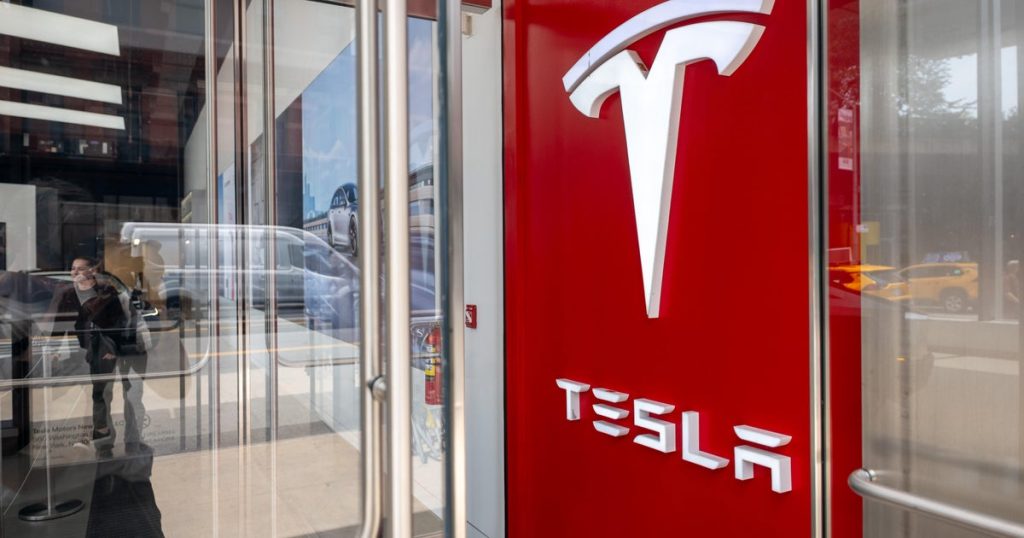Tesla is facing a significant decline in U.S. sales during the second quarter of this year, with competition mounting and growing discontent regarding CEO Elon Musk’s leadership. Sales figures dropped to 384,122 vehicles from 443,956 in the same timeframe last year. However, despite the challenges, analysts predict future growth opportunities for the electric vehicle manufacturer, particularly due to advancements in autonomous driving technology.
| Article Subheadings |
|---|
| 1) Overview of Tesla’s Sales Decline |
| 2) Factors Contributing to the Downturn |
| 3) Competition in the Electric Vehicle Market |
| 4) Analyst Projections for Tesla’s Future |
| 5) Impacts on Tesla’s Stock Prices |
Overview of Tesla’s Sales Decline
In the second quarter, Tesla’s sales in the U.S. plummeted, dropping by more than 13% compared to the previous year. Specifically, the company sold 384,122 vehicles from April to June, a downturn from 443,956 during the same period last year. Most notable was the performance of the Models 3 and Y, which together reached 373,728 units sold, slightly surpassing Wall Street estimates of 356,000 vehicles. This decline represents a concerning trend for the company, especially as it positions itself in the rapidly shifting electric vehicle market.
Factors Contributing to the Downturn
Several reasons are pointed to for this notable sales decline. CEO Elon Musk has acknowledged that his controversial comments and political engagements may have alienated some customers. Specifically, ongoing friction with political figures, including a recent outburst regarding a Republican tax and spending bill, has drawn attention away from the company’s successes. Moreover, Musk has indicated that many potential buyers are delaying purchases, anticipating new versions of Tesla’s best-selling Model Y. This anticipation has prompted consumers to stall their buying decisions, significantly affecting sales during this quarter.
Competition in the Electric Vehicle Market
Tesla is not only grappling with internal issues but also facing stiff competition in the electric vehicle segment. Recent sales data from Europe highlighted a staggering nearly 50% drop in Tesla sales in April, while the broader market for electric cars grew by 28%. This suggests that competitors are gaining traction and closing the gap in becoming viable alternatives to Tesla. The evolving landscape indicates a shift that could impact Tesla’s market share moving forward. The challenges underscore the necessity for Tesla to innovate continually and adapt to the rapidly changing preferences of consumers.
Analyst Projections for Tesla’s Future
Despite the recent downturn, some analysts remain optimistic about Tesla’s long-term growth prospects. Wedbush analyst Dan Ives believes that the company is well-positioned for expansion in the near future. He highlights Tesla’s ongoing investment in autonomous driving technology and the recent launch of a “robotaxi” service in Austin, Texas. According to Ives, the future of automotive innovation lies in autonomy, and Tesla’s advancements could allow it to dominate this sector. His positive outlook offers hope for Tesla amid the challenges it currently faces.
Impacts on Tesla’s Stock Prices
The stock market has reacted variably to Tesla’s sales figures, indicating investor sentiment reflecting the company’s current challenges and future opportunities. Following the unveiling of the latest sales reports, Tesla’s stock saw an increase, rising by 4% to $309.30. This increase suggests that investors may have confidence in the company’s potential to rebound, especially with its focus on autonomous technology. However, persistent sales declines must be addressed to sustain investor enthusiasm and market valuation.
| No. | Key Points |
|---|---|
| 1 | Tesla’s U.S. sales fell by over 13% in the second quarter from the previous year. |
| 2 | Models 3 and Y combined for 373,728 sales, exceeding Wall Street estimates. |
| 3 | Musk’s political comments and customer anticipation for new models are affecting sales. |
| 4 | Competition is intensifying, particularly in the European electric vehicle market. |
| 5 | Analysts believe Tesla’s investments in autonomous technology may lead to future growth. |
Summary
Tesla’s recent sales decline signifies more than just a dip in numbers; it reflects ongoing challenges in leadership, competition, and market perception. While the company faces hurdles, optimistic projections from analysts hint at a potentially bright future if it can navigate the current landscape effectively. The electric vehicle market remains dynamic, and Tesla must adapt to maintain its leadership position.
Frequently Asked Questions
Question: What are the current sales figures for Tesla in the U.S.?
In the second quarter, Tesla reported sales of 384,122 vehicles in the U.S., representing a decline of over 13% compared to the same quarter the previous year.
Question: How is Tesla addressing the challenges in its sales performance?
Tesla is focusing on new model launches and is heavily investing in autonomous driving technology to enhance customer experiences and capture more market share.
Question: What impact does competition have on Tesla’s sales?
Increased competition in the electric vehicle market has contributed to Tesla’s recent sales decline, particularly shown by a nearly 50% drop in sales in Europe while the market for electric vehicles has seen overall growth.


